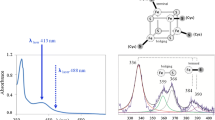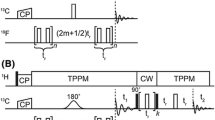Abstract
The S100 family belongs to the EF-hand calcium-binding proteins regulating a wide range of important cellular processes via protein–protein interactions. Most S100 proteins adopt a conformation of non-covalent homodimer for their functions. Calcium binding to the EF-hand motifs of S100 proteins is essential for triggering the structural changes, promoting exposure of hydrophobic regions necessary for target protein interactions. S100A11 is a protein found in diverse tissues and possesses multiple functions upon binding to different target proteins. RAGE is a multiligand receptor binding to S100A11 and the interactions at molecular level have not been reported. However, the three-dimensional structure of human S100A11 containing 105 amino acids is still not available for further interaction studies. To determine the solution structure, for the first time we report the 1H, 15N and 13C resonance assignments and protein secondary structure prediction of human S100A11 dimer in complex with calcium using a variety of triple resonance NMR experiments and the chemical shift index (CSI) method, respectively.


Similar content being viewed by others
References
He H, Li J, Weng S, Li M, Yu Y (2009) S100A11: diverse function and pathology corresponding to different target proteins. Cell Biochem Biophys 55:117–126
Leclerc E, Fritz G, Vetter SW, Heizmann CW (2009) Binding of S100 proteins to RAGE: an update. Biochim Biophys Acta 1793:993–1007
Schäfer BW, Heizmann CW (1996) The S100 family of EF-hand calcium-binding proteins: functions and pathology. Trends Biochem Sci 21:134–140
Skelton NJ, Kördel J, Akke M, Forsén S, Chazin WJ (1994) Signal transduction versus buffering activity in Ca2+-binding proteins. Nat Struct Biol 1:239–245
Smith SP, Shaw GS (1998) A change-in-hand mechanism for S100 signalling. Biochem Cell Biol 76:324–333
Wishart DS, Sykes BD (1994) The 13C chemical shift index: as simple method for the identification of protein secondary structure using 13C chemical shift data. J Biomol NMR 4:171–180
Acknowledgments
This work was supported by Grant from the National Science Council (NSC) of the Republic of China (NSC 100-2113-M-007-012-MY3).
Author information
Authors and Affiliations
Corresponding author
Rights and permissions
About this article
Cite this article
Hung, KW., Chang, YM. & Yu, C. Resonance assignments of Ca2+-bound human S100A11. Biomol NMR Assign 7, 211–214 (2013). https://doi.org/10.1007/s12104-012-9412-z
Received:
Accepted:
Published:
Issue Date:
DOI: https://doi.org/10.1007/s12104-012-9412-z




